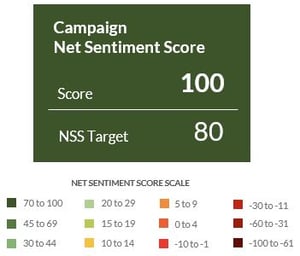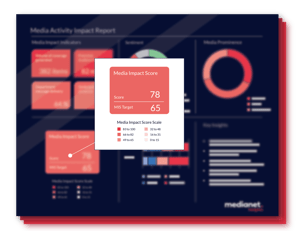An introduction to analysis: key terms you should know
In today's digital age, with no lack of data and information available to us, the art of media analysis has never been more crucial. Whether you're a seasoned marketer or PR comms professional, new to the industry, or simply an avid consumer of content, understanding the nuances of media analysis can guide you through the ever-evolving landscape of information.
With seemingly no limit to the nuanced terms out there, here's a few terms that everyone in the industry should know.
Media clips/clippings
A term used to describe individual pieces of media coverage.


Media monitoring
A tool used to monitor the web for clipping in print, broadcast, digital outlets as well as on social media platforms. Read more.
Media analysis
The act of examining and evaluating clippings to generate insights on the success and performance of media coverage for your business, industry, campaign or issue.
Media intelligence
Systems and services that analyse media coverage to measure and manage brand, campaign or industry performance.
Consultative insights
A service that uses data collection tools, including media monitoring, to get only the most relevant media results before a team of experts analyses each item individually to deliver crucial insights and meaningful reports.
Insights as a Service
A method of media analysis service delivery in which insights can be accessed via a subscription, rather than standalone and bespoke/commissioned reports.
Media Snapshot Report
Short, shareable report delivering on the key media metrics and insights for your organisation. See more reports.
Sentiment/Favourability
An assessment of how a reasonable reader would rate the mention of a company or organisation within a media article, segment or post.
Sentiment Score
A metric used to benchmark sentiment. Sentiment Scores can range from -100 through to +100 and are used to track media sentiment and reputation over time.

Qualitative analysis
The analysis of data that is not represented by data points i.e. interviews, articles etc. In media analysis this includes metrics such as sentiment, message delivery, campaign performance, spokesperson engagement, neutralisation, journalist sentiment etc.
Quantitative analysis
Stat and number-based data that form the basis of analysis. In media analysis, this includes data points such as volume of media mentions, audience reach, audience engagement levels, traffic, etc.

Prominence
How significantly a business, organisation or issue is mentioned or featured in a clipping. i.e. was the article written about a certain organisation? Or, were they just mentioned briefly?
Active coverage
Clippings in which the organisation has actively contributed to via a media release, campaign, research report or spokesperson input.
Neutralisation
The act of neutralising a media item that would have reflected negatively without input from a spokesperson or organisational statement.
Reputation tracking
The act of using qualitative media analysis to measure and track an organisation’s reputation over time.
Key message delivery
A metric used to understand whether a key message has been successfully delivered in a media item, often presented as a percentage of total coverage.
International Association for Measurement and Evaluation of Communication (AMEC)
The industry’s peak professional body representing organisations and practitioners who provide media evaluation and communication research, analysis, evaluation and insights. Learn more.

Media measurement framework
A way of structuring metrics and analysis around the media strategy, goals, and objectives of the business.
📃📃📃




